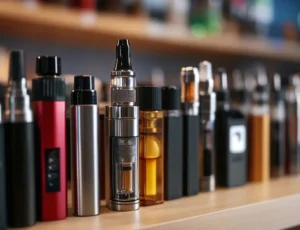In a world where saying “yes” is often equated with being kind, cooperative, or ambitious, the word “no” can feel confrontational or even selfish. Yet, learning to say no is one of the most powerful tools for protecting your energy, mental health, and time. Setting healthy boundaries is not about shutting others out—it’s about creating space to live a more intentional, balanced life.
Why We Struggle to Say No
Many people hesitate to say no out of guilt, fear of conflict, or the desire to please. Whether it’s agreeing to a last-minute work project, accepting a social invite when you’re exhausted, or tolerating behavior that crosses a line, we often prioritize others’ comfort over our own well-being. This tendency can stem from childhood conditioning, cultural expectations, or personal insecurities.
However, constantly saying yes when you mean no eventually leads to resentment, burnout, and a loss of personal identity. You start living on someone else’s terms, which can make you feel out of control and emotionally drained.
What Boundaries Really Are
Boundaries are guidelines you set for yourself and others about how you want to be treated, how much time and energy you’re willing to give, and what behavior is acceptable in your life. They’re not walls that isolate—they’re fences with gates that open and close as needed.
Healthy boundaries clarify where you end and someone else begins. They allow relationships to thrive in mutual respect rather than in obligation or pressure.
How Saying No Protects Your Mental Health
Saying no is an act of self-respect. It tells the world that your time and energy are valuable. When you say no to things that drain you, you free up space for the things that nourish you—like rest, hobbies, deeper relationships, or personal growth.
This simple word can significantly reduce stress and anxiety. When you’re not overcommitted, you’re more present in the activities you do choose. Your mind is less cluttered, and your sense of purpose becomes clearer. Saying no helps you reclaim your priorities and stop living reactively.
Saying No Strengthens Relationships
While it may seem counterintuitive, saying no can actually improve your relationships. People who set clear boundaries are often seen as more authentic and trustworthy. They don’t overpromise or agree just to avoid discomfort.
When you respect your own limits, you encourage others to do the same—creating healthier dynamics based on honesty rather than obligation. Boundaries reduce misunderstandings and prevent the kind of simmering resentment that can quietly damage a relationship over time.
Practical Ways to Say No Without Guilt
- Be Direct but Kind: You can say no without being harsh. For example, “I appreciate the offer, but I have too much on my plate right now.”
- Delay Your Response: If you feel pressured, give yourself time. Say, “Let me think about it and get back to you.” This allows you to assess your capacity before committing.
- Don’t Over-Explain: A simple no is enough. You don’t need to justify your decision with long explanations. Trust that your boundaries are valid.
- Offer Alternatives (If Appropriate): If you want to maintain the relationship or contribute in another way, suggest a different time or approach. For example, “I can’t join this week, but I’d love to catch up next month.”
- Practice: Like any skill, setting boundaries gets easier the more you do it. Start small and build your confidence.
Embracing the Long-Term Benefits
Once you begin to practice saying no, you’ll notice a shift. You’ll feel more grounded, less reactive, and more in tune with your true needs. Your time becomes more intentional, and you start aligning your life with your values.
Boundaries are not a rejection of others—they’re an affirmation of yourself. They allow you to show up more fully, not less. So the next time you feel compelled to say yes out of guilt or habit, pause. Ask yourself: “Is this serving me?” If the answer is no, then it’s okay to say just that.
Get more details from these resources :
https://rent2010.net/
https://froglinks.org/
https://almenpar.net/
https://compagniefai.com/
https://colturidebucuresti.net/
https://cimots.com/
https://imbookingit.com/
https://arafeina.com/
https://sunglassesoutletsky.com/
https://bestcriminallawyerdelhi.com/
https://stephentyrone.com/
https://myexperttax.com/
https://therapinsider.com/
https://tabernaluciferina.com/
https://samdental.org/
https://claudiakarvan.net/
https://upcollective.org/
https://healthykidsnm.org/
https://ezycleanpest.com.au/
https://launchpadcreative.com.au/
https://directorypass.com/
https://travelntourism.org/
https://traveldistricts.com/
https://dvplegalconsultants.com/
https://dailyghnewsonline.com/
https://anhtutravel.com/
https://charlestonsfastcashhomebuyer.com/
https://trihc.com/
https://homedesignmaine.info/
https://lilihome.net/




